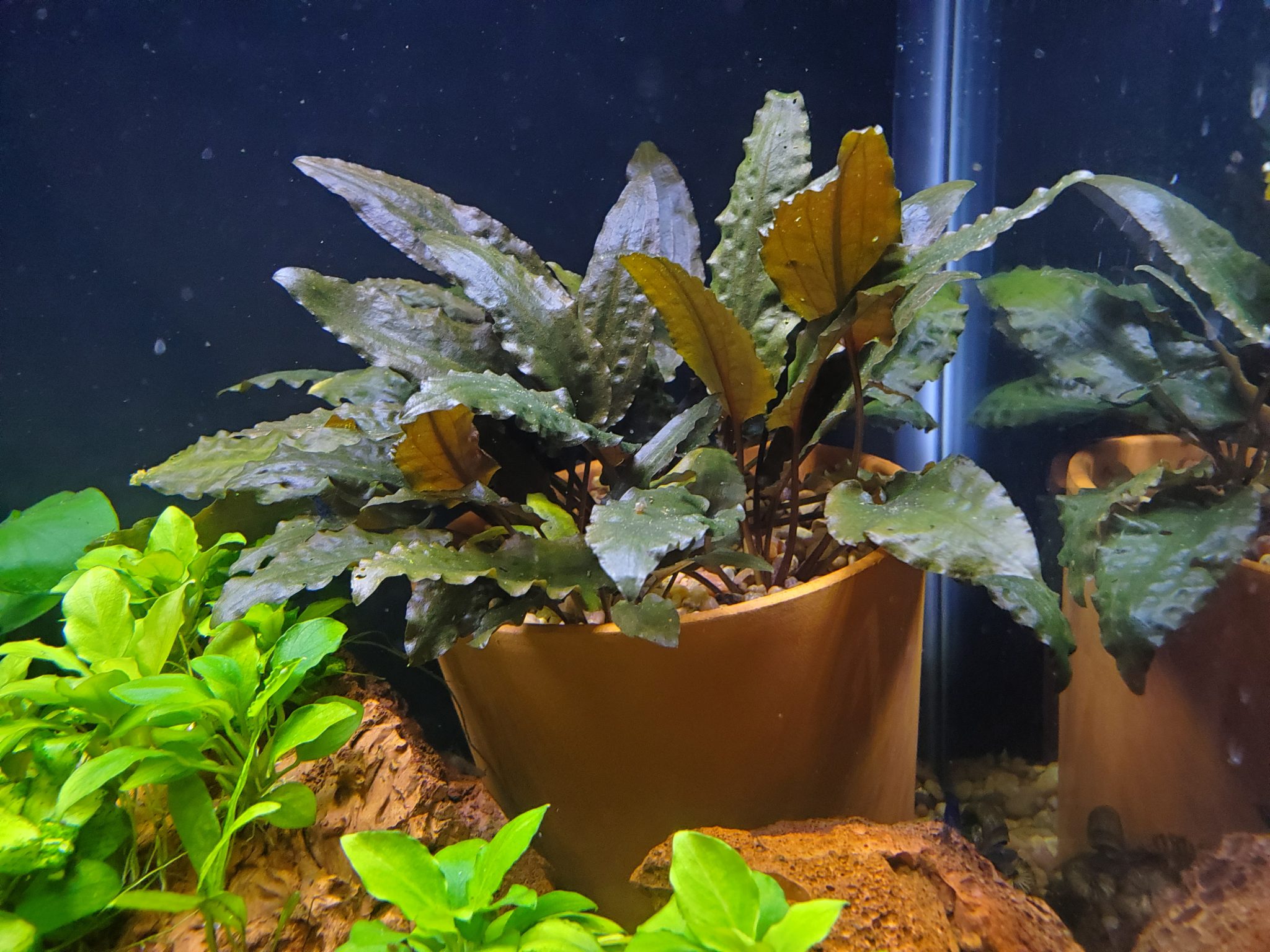Potted Aquarium Plants
If you're looking for a way to add some color and life to your aquarium, potted aquarium plants are a fantastic option. Not only do they look beautiful, but they also provide a range of benefits for your aquatic pets. In this blog post, we'll explore the world of potted aquarium plants, from their benefits to their care requirements, and share our personal experiences with these fascinating plants.
Pain Points of Potted Aquarium Plants
One of the biggest pain points related to potted aquarium plants is their care requirements. These plants need specific conditions to thrive, including appropriate lighting, water quality, and fertilization. Additionally, some species of potted aquarium plants can be challenging to find, which can make it difficult for aquarium hobbyists to acquire the plants they want.
The Target of Potted Aquarium Plants
Potted aquarium plants are an excellent addition to any aquarium, providing a range of benefits for both fish and their owners. These plants can help to filter the water, reducing the buildup of harmful toxins, and oxygenate the tank, promoting the health of fish and other aquatic animals. Additionally, potted aquarium plants can help to create a more natural, aesthetically pleasing environment for your pets, mimicking their natural habitat.
Main Points about Potted Aquarium Plants
In summary, potted aquarium plants are a fantastic option for any aquarium enthusiast looking to add a splash of color and natural beauty to their tank. These plants provide a range of benefits for fish and their owners, from filtration and oxygenation to a more natural, aesthetically pleasing environment. However, they do require specific care requirements to thrive, including appropriate lighting, water quality, and fertilization.
Personal Experience with Potted Aquarium Plants
One of our team members has been an aquarium enthusiast for over a decade and has extensive experience with potted aquarium plants. Their personal experience with these plants has been overwhelmingly positive, with many species flourishing in their tanks, adding color and vibrancy to their aquatic environments. They often use potted aquarium plants such as Alternanthera Roseafolia, which is easy to grow and provides a beautiful, bright red color that complements the green color of other plants in the tank.

Care Requirements for Potted Aquarium Plants
Potted aquarium plants require specific conditions to thrive, including appropriate lighting, water quality, and fertilization. In terms of lighting, most potted aquarium plants require moderate to high levels of light, which can be provided through fluorescent or LED light bulbs. Water quality is another critical factor in the care of potted aquarium plants, with appropriate pH, hardness, and nutrient levels being essential for the health of the plants. Finally, fertilization is key to the growth of potted aquarium plants, with both liquid and substrate fertilizers available to provide the necessary nutrients.

Best Species of Potted Aquarium Plants
Some of the best species of potted aquarium plants include Anubias Nana, Java Fern, Amazon Sword, and Cryptocoryne Wendtii. Each of these plants is relatively easy to grow, requires moderate lighting, and can tolerate a wide range of water conditions. For those looking for a more colorful addition to their tank, Alternanthera Roseafolia, Ludwigia Repens, and Rotala Indica provide a bright red or pink color that adds a unique and eye-catching element to any aquarium.
Question and Answer Section
Q: Do potted aquarium plants require CO2 injection?
A: While some aquarium hobbyists inject CO2 to provide additional carbon for their potted aquarium plants, it is not a requirement for most species. Many potted aquarium plants can thrive without CO2 injection, as long as they receive appropriate lighting, water quality, and fertilization.
Q: Can potted aquarium plants be grown without substrate?
A: Yes, some aquarium hobbyists grow potted aquarium plants without substrate, instead, attaching the plants directly to rocks or driftwood using fishing line or a glue-like substance. This is a popular technique with species like Anubias Nana and Java Fern.
Q: How often should potted aquarium plants be fertilized?
A: The frequency of fertilization depends on the specific needs of the plants, as well as the fertilizer used. Generally, liquid fertilizers should be added once or twice a week, while substrate fertilizers can last up to several months, depending on the product.
Q: What is the ideal temperature for potted aquarium plants?
A: The ideal temperature for most potted aquarium plants is between 72-82°F (22-28°C). However, some species, like Anubias Nana, can tolerate temperatures as low as 60°F (15.6°C).
Conclusion
In conclusion, potted aquarium plants are a beautiful, beneficial addition to any aquarium. While they do require specific care requirements to thrive, the effort is well worth it for the vibrancy and life they bring to the tank. With a wide range of species available, aquarium hobbyists can find the perfect potted aquarium plants to suit their specific needs and preferences.
Gallery
Alternanthera Roseafolia Potted BUY2GET1 Freshwater Live Aquarium Plant

Photo Credit by: bing.com / alternanthera potted
Adding Potted Plants To Your Aquarium - Odin Aquatics

Photo Credit by: bing.com /
Aquatic Plants | Reptarium

Photo Credit by: bing.com / plants reptarium aquatic aquarium potted
6 X Assorted Potted Echinodorus Aquarium Plants
Photo Credit by: bing.com / potted echinodorus
Potted Aquatic Plants | Plants, Hydroponic Gardening, Aquatic Plants

Photo Credit by: bing.com / potted aquatic hydroponic
